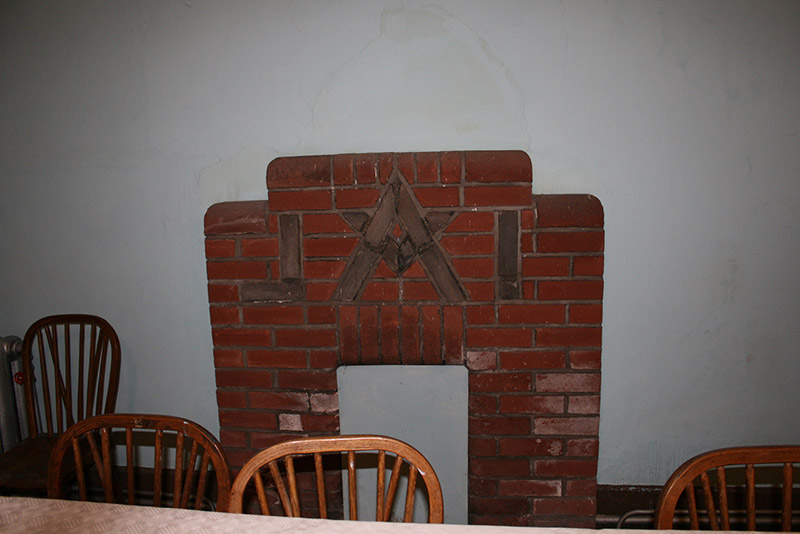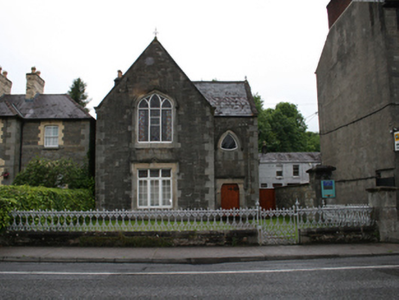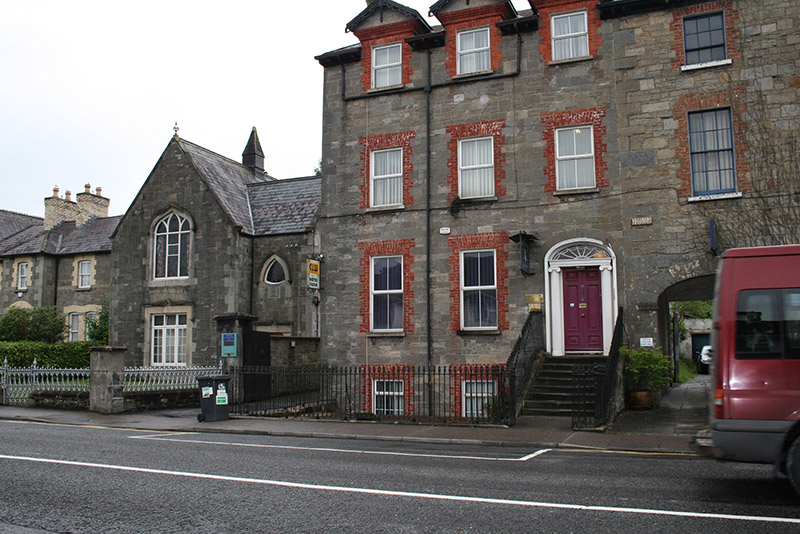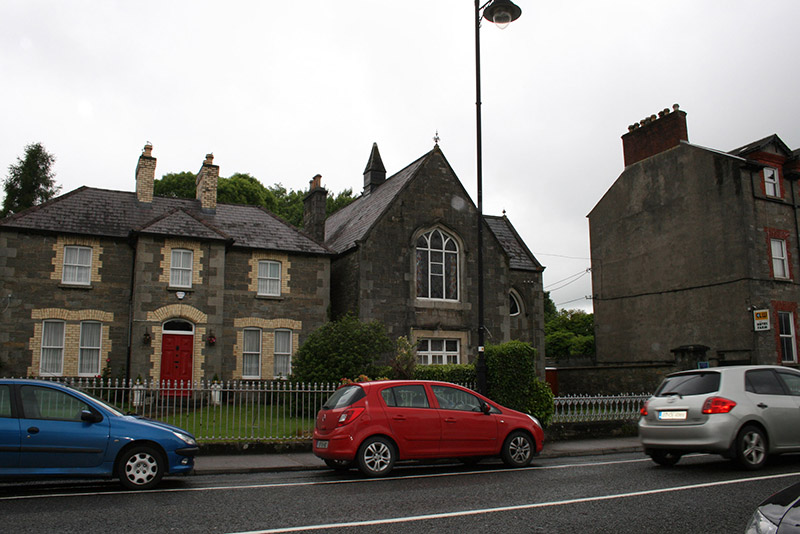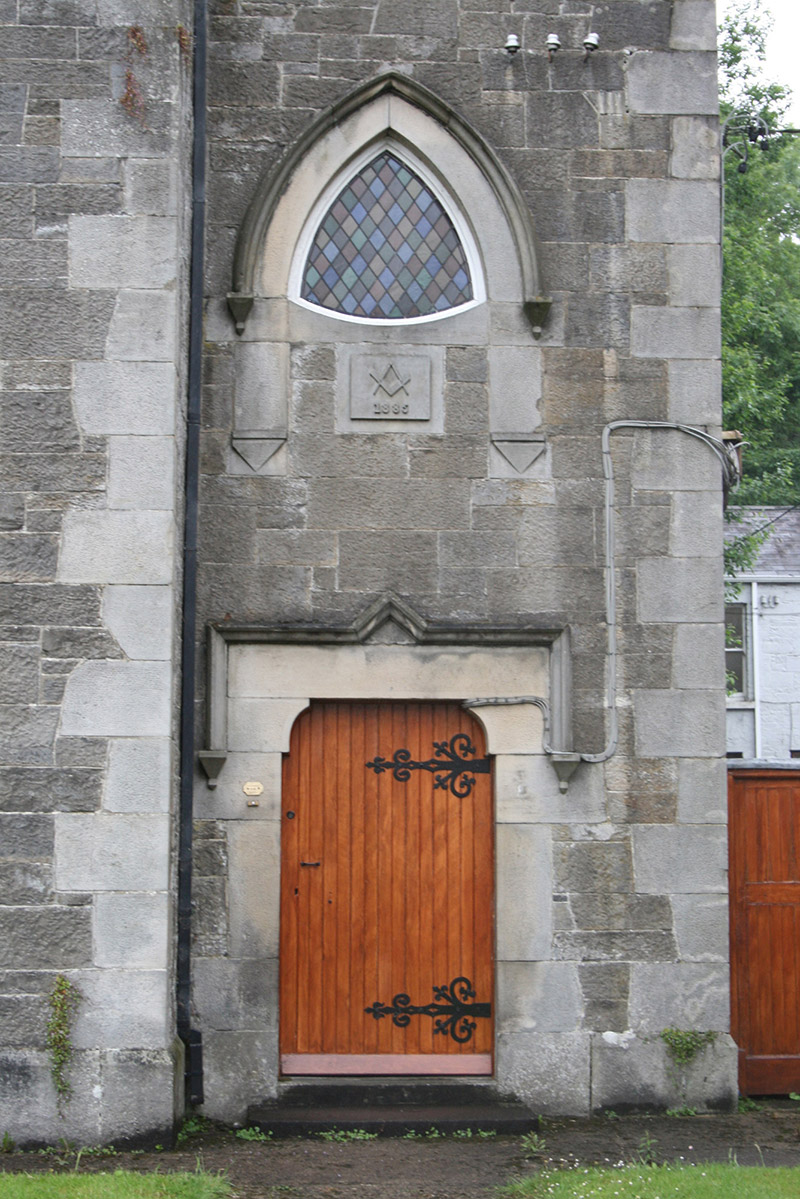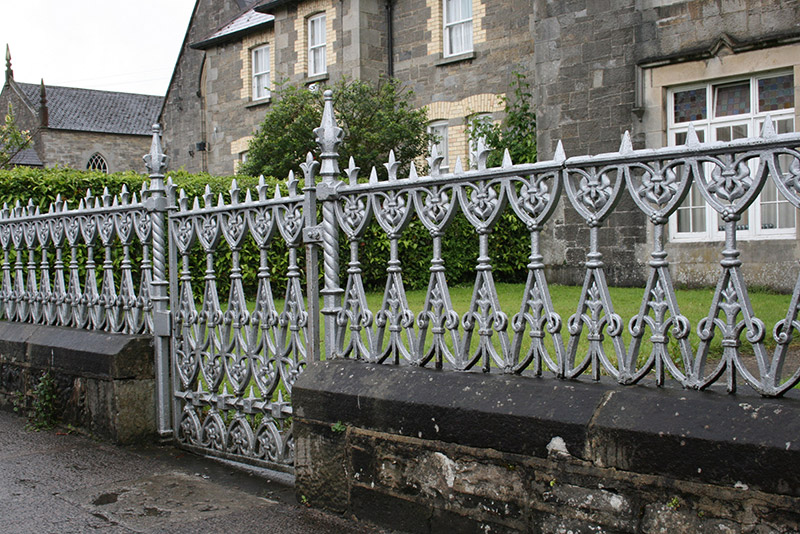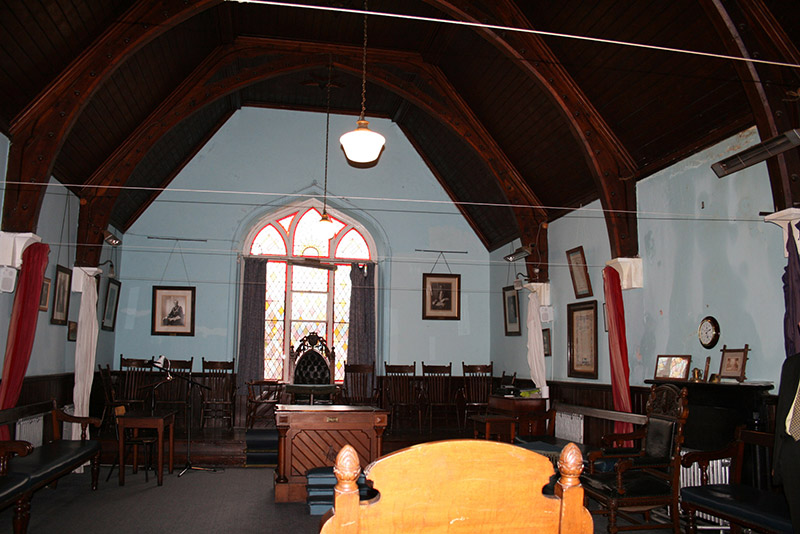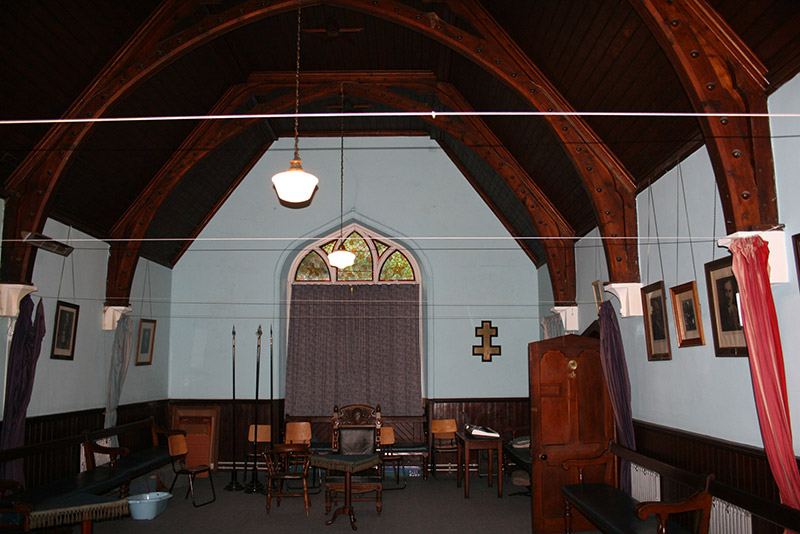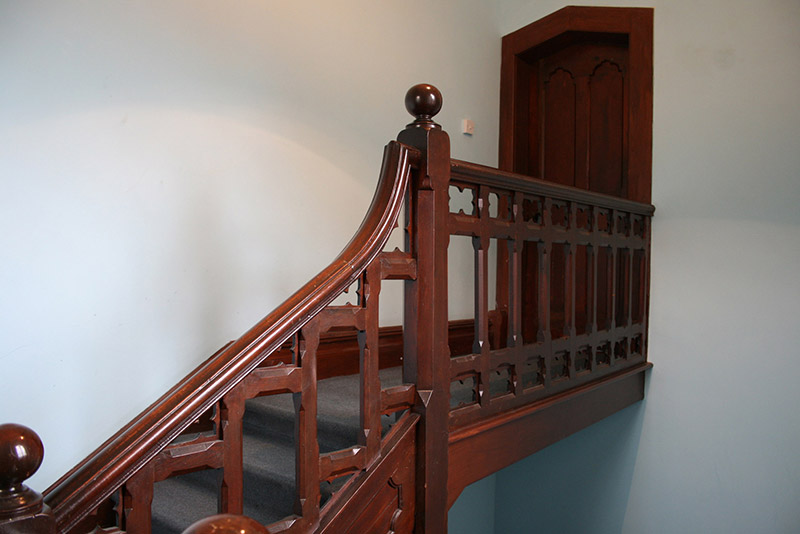Survey Data
Reg No
40000088
Rating
Regional
Categories of Special Interest
Architectural, Social
Previous Name
Cavan Masonic Hall
Original Use
Masonic lodge/hall
In Use As
Masonic lodge/hall
Date
1880 - 1890
Coordinates
241854, 304922
Date Recorded
13/06/2012
Date Updated
--/--/--
Description
Detached gable-fronted two-bay two-storey masonic hall, built 1885, with projecting pair of gables to north elevation and lean-to extension to rear. Pitched slate roof with courses of scalloped purple slates, terracotta ridge tiles, timber louvred vent to central ridge and uPVC rainwater goods. Snecked limestone front elevation with dressed quoins and plaque over entrance with mason’s symbol and date 1885. Roughcast rendered walls to side elevation and red brick to extension. Square-headed window opening with stone label moulding to ground floor of gable front with tooled block-and-start sandstone window surround and tripartite timber casement window having stained glass overlights with lead glazing bars. Tudor arched window opening with stone label moulding to first floor of front gable, tooled block-and-start sandstone window surround with stained glass, lead glazing bars and timber mullions. Subtriangular window opening with hood moulding to first floor of entrance bay with sandstone surround and stained glass window. False-arched opening to entrance bay formed of lintel on corbels with sandstone surround, hood moulding and timber tongue and groove door with ornate hinges. Fine open-well stairs to first floor with principal meeting hall. Corbelled trusses to meeting hall ceiling, wainscotting and elevated platform to front wall, retaining original furniture and fittings. Ornate cast-iron railings resting on coursed rubble plinth wall with limestone coping to street, with dressed stone pier to north and coursed rubble wall with pier to northern boundary.
Appraisal
The masonic lodge is an excellent example of a nineteenth century meeting hall. It retains a significant proportion of its original interior and exterior detailing. The quality craftsmanship of the finishes, including iron-work, stonework and carpentry is appropriate to a mason’s lodge and is testament to the skill of local workers. The lodge forms part of an important group of religious and associated buildings on Farnham Street. Its asymmetrical and ecclesiastical motifs are in striking contrast to much of the earlier housing on the street.
